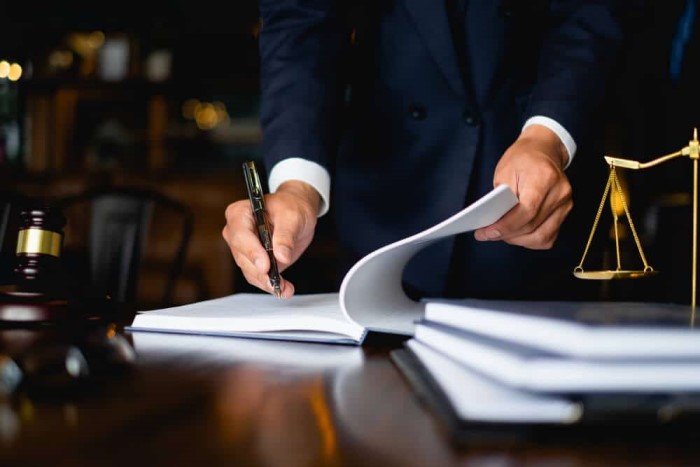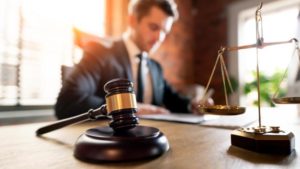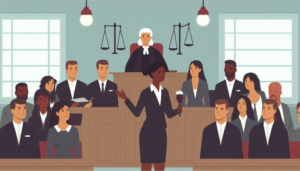
Injuries from slip and fall accidents can hit harder than you might expect. They don’t just affect your health but can also put a dent in your wallet. This is where a slip and fall lawyer steps in to save the day, ensuring you get the compensation you deserve. In this article, we’ll break down how these legal professionals can make a significant difference in your case, helping you bounce back both physically and financially.
Slip and fall accidents are pretty much what they sound like—incidents where someone slips, trips, or falls due to dangerous conditions on someone else’s property. These mishaps can happen almost anywhere: inside a bustling mall, on a cracked sidewalk, or even at your workplace. And let’s be honest, a little spill can lead to a big deal if you’re not careful.
You might think slip and fall accidents are rare, but they’re more common than you’d guess. From bruises and sprains to serious fractures and head injuries, these accidents can change your life in an instant. And it’s not just about the pain; the medical bills, lost wages, and the sheer frustration of dealing with it all can be overwhelming. That’s why having a legal expert by your side is crucial—someone who can help ensure you’re not left picking up the pieces alone.
Types and Categories
Understanding the different types of slip and fall accidents can help in identifying the specifics of your case. Let’s dive into the main categories:
Indoor Slip and Fall
Indoor accidents often happen because of things like wet floors, loose carpets, or poor lighting. Picture this: you’re walking down a supermarket aisle when suddenly—bam!—you’re on the floor because of a spill that wasn’t cleaned up. It’s a simple scenario, but it can lead to a complicated legal battle.
Outdoor Slip and Fall
Outdoor slip and falls can be just as treacherous. Imagine walking to your car after a snowy day, only to find yourself sprawled on the icy pavement. Uneven sidewalks, poorly lit parking lots, and weather-related hazards like ice or puddles are common culprits here.
Workplace Accidents
Workplace slip and falls are another beast entirely. They’re especially common in industries like construction or manufacturing, where hazards are part of the job. Slippery surfaces, cluttered walkways, and unmarked dangers can all lead to accidents that may require legal action.
Symptoms and Signs
When you take a tumble, it’s not always easy to know how badly you’re hurt. Recognizing the signs and symptoms early on is key.
Common Symptoms
After a slip and fall, common symptoms include pain, swelling, bruising, and limited movement in the injured area. You might brush it off as just a minor tweak, but even what seems like a small injury can escalate without proper care.
Hidden Injuries
Sometimes, the real damage isn’t visible. Concussions, internal bleeding, or soft tissue injuries might not show immediate symptoms, but they’re just as serious. That’s why getting a thorough check-up after a fall is a must, even if you think you’re okay.
Causes and Risk Factors
Knowing what caused your slip and fall can play a huge role in determining liability. Here are some common causes:
Environmental Hazards
Wet floors, icy walkways, debris—these are classic environmental hazards that can lead to accidents. Public spaces like stores, sidewalks, and restaurants should be maintained to prevent these risks.
Negligence
Negligence occurs when property owners fail to keep their premises safe. This might mean not fixing a known hazard or failing to put up warning signs. Negligence is often at the heart of slip and fall cases, and proving it can be your ticket to fair compensation.
Diagnosis and Tests
If you’ve had a slip and fall, documenting your injuries is crucial for building a strong case.
Medical Evaluation
First things first, get a medical evaluation. Even if you’re feeling tough, a doctor’s assessment will help determine the extent of your injuries and lay the groundwork for any claims you may need to make.
Diagnostic Tests
Tests like X-rays, MRIs, or CT scans are often necessary to uncover the full scope of your injuries. These diagnostic tools can reveal fractures, soft tissue damage, or other internal injuries that aren’t immediately visible.
Treatment Options
Addressing slip and fall injuries goes beyond just a Band-Aid and some ice. Here’s what treatment might look like:
Immediate Care
Immediately after your fall, first aid is a priority. This can include things like immobilizing the injured area, applying ice to reduce swelling, and managing pain with over-the-counter medications.
Medical Treatments
Depending on your injuries, medical treatments could involve medication, physical therapy, or even surgery. The goal is not just to heal but to restore your quality of life as much as possible.
Preventive Measures
Wouldn’t it be great to avoid slip and falls altogether? While accidents do happen, some steps can help prevent them:
Hazard Identification
Regularly inspecting and maintaining areas for hazards is a key preventive measure. This means checking for things like uneven surfaces, wet spots, or poor lighting that could lead to accidents.
Safety Measures
Safety measures like installing handrails, placing warning signs, or using non-slip mats can go a long way in preventing falls. It’s all about being proactive rather than reactive.
Personal Stories or Case Studies
Sometimes, hearing a real-life story helps put things into perspective.
Case Study: Sarah’s Story
Take Sarah, for example. She slipped on a wet floor at a grocery store, fracturing her wrist. The injury required surgery and months of physical therapy. With the help of a slip and fall lawyer, Sarah was able to secure compensation not only for her medical bills but also for her lost wages during recovery. Her story is a testament to the power of legal representation.
Expert Insights
The legal world can be tricky to navigate on your own. Here’s how the pros can help:
Legal Consultation
A legal consultation with a slip and fall lawyer can clarify your rights and evaluate the strength of your case. They’ll help you understand the steps to take and whether pursuing a lawsuit is in your best interest.
Advocacy and Representation
Your lawyer will advocate for you, gathering evidence, negotiating with insurance companies, and representing you in court if it comes to that. Their goal is simple: to maximize your compensation and support you every step of the way.
Conclusion
Slip and fall accidents are no joke—they can lead to serious injuries and financial stress. But you don’t have to tackle the aftermath alone. With a dedicated slip and fall lawyer by your side, you can focus on recovery while they handle the legal complexities. They’ll fight to ensure you get the compensation you deserve, helping you bounce back from the fall stronger than ever.
FAQs
- What should I do immediately after a slip and fall accident?
Seek medical attention right away, document the scene, and gather any evidence like photos or witness statements. - How can a slip and fall lawyer help me?
A lawyer can guide you through the legal process, help prove negligence, and negotiate with insurance companies to maximize your compensation. - Can I file a slip and fall lawsuit if I was partially at fault?
Yes, you can still file a claim. Your compensation may be reduced based on your level of fault, but a lawyer can help navigate these nuances. - What types of damages can I recover in a slip and fall case?
You can recover damages for medical expenses, lost wages, pain and suffering, and sometimes punitive damages, depending on the case. - How long do I have to file a slip and fall claim?
The timeframe, known as the statute of limitations, varies by state. It’s crucial to act quickly and consult a lawyer to ensure you don’t miss any deadlines.
This article provides a comprehensive guide to understanding the role of slip and fall lawyers in maximizing your compensation and underscores the importance of seeking legal help in such cases.







